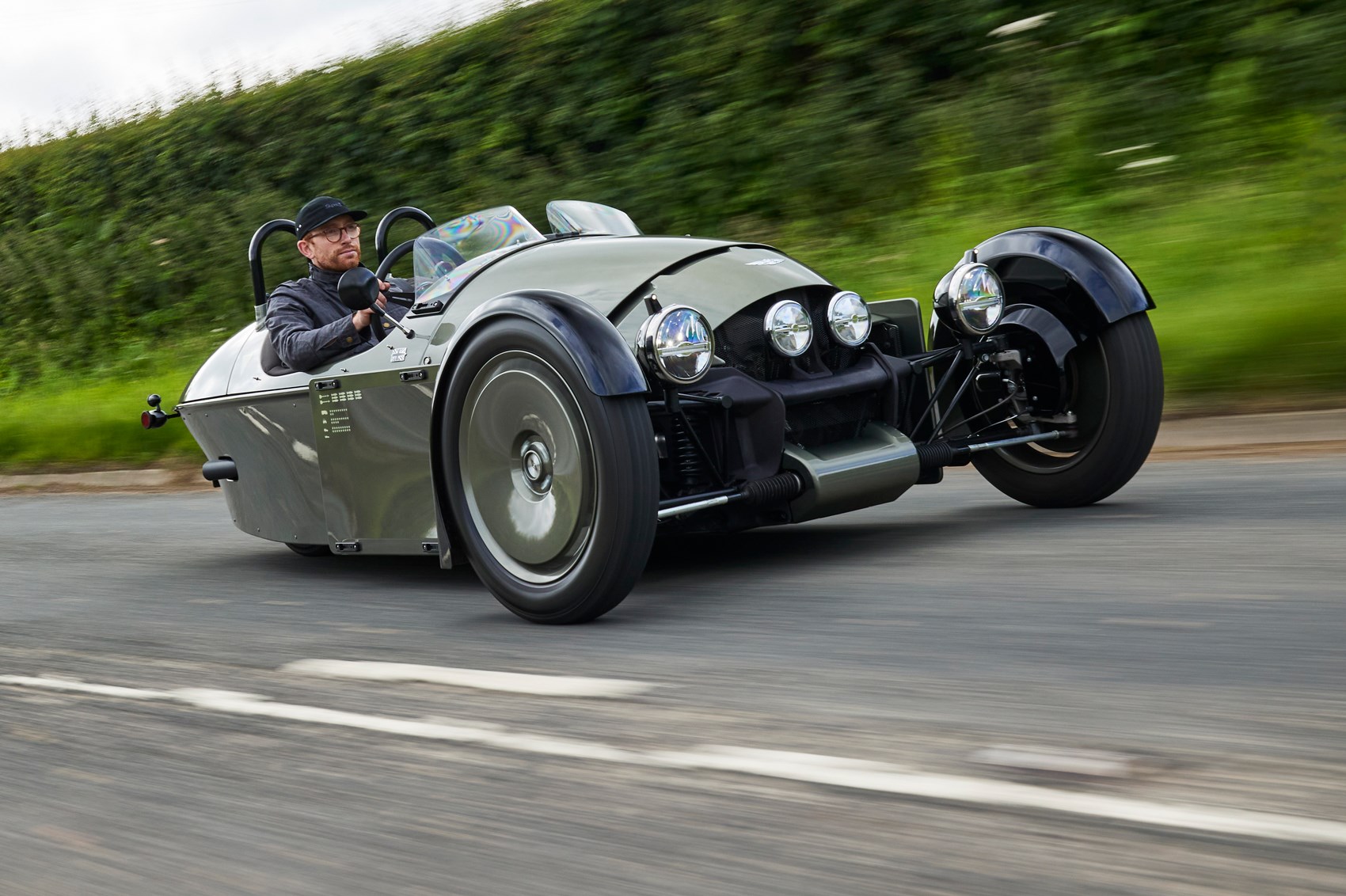Notice: Trying to access array offset on value of type bool in /home/momo4454/public_html/wp-content/plugins/elementor/includes/base/widget-base.php on line 223
Notice: Undefined offset: -1 in /home/momo4454/public_html/wp-content/plugins/elementor/includes/base/controls-stack.php on line 695
The Morgan Story
 Morgan history dates back to 1899 when the teenage son of a Hereford rector, H.F.S. Morgan, had a rather risky ride down a steep hill in a cycle car. Just over ten years later the first Morgan was born – in the form of a three wheeler with an 8 h.p. twin cylinder J.A.P. engine, a tiller and a single seat. It is interesting to note that the independent front suspension used on the first car was extremely advanced for its time and is almost identical to that used on all traditional chassis up until 2020 when the new CX models were introduced. The coming of four wheels eventuated in 1935 and, sadly, three wheels were discontinued in 1950 however a modern version was introduced to rave reviews in 2012 and is still in production. The English Morgan Sports Car Club, (or Four Wheeler Club) was consequently founded in 1951.
Morgan history dates back to 1899 when the teenage son of a Hereford rector, H.F.S. Morgan, had a rather risky ride down a steep hill in a cycle car. Just over ten years later the first Morgan was born – in the form of a three wheeler with an 8 h.p. twin cylinder J.A.P. engine, a tiller and a single seat. It is interesting to note that the independent front suspension used on the first car was extremely advanced for its time and is almost identical to that used on all traditional chassis up until 2020 when the new CX models were introduced. The coming of four wheels eventuated in 1935 and, sadly, three wheels were discontinued in 1950 however a modern version was introduced to rave reviews in 2012 and is still in production. The English Morgan Sports Car Club, (or Four Wheeler Club) was consequently founded in 1951.
 The Morgan Motor Co Ltd., is a small factory that continues to hand build that delightful anachronism, the Morgan motor car. The Morgan car is entirely hand built in a small factory in Malvern Link, Worcestershire, using construction methods and equipment dating back to the early part of the 20th century. The body is constructed of steel or aluminium attached to a framework of Belgian ash timber. This provides a body that is both light and strong. Since 2020 all Morgan four wheel cars have been manufactured on a bonded and rivetted aluminium chassis using aircraft technology.
The Morgan Motor Co Ltd., is a small factory that continues to hand build that delightful anachronism, the Morgan motor car. The Morgan car is entirely hand built in a small factory in Malvern Link, Worcestershire, using construction methods and equipment dating back to the early part of the 20th century. The body is constructed of steel or aluminium attached to a framework of Belgian ash timber. This provides a body that is both light and strong. Since 2020 all Morgan four wheel cars have been manufactured on a bonded and rivetted aluminium chassis using aircraft technology.


 In 2022 the company launched a new model of the three wheeled Morgan. Known as the Morgan Super 3, this car is powered by a 1.5 litre Ford 3 cylinder petrol engine.
In 2022 the company launched a new model of the three wheeled Morgan. Known as the Morgan Super 3, this car is powered by a 1.5 litre Ford 3 cylinder petrol engine.
